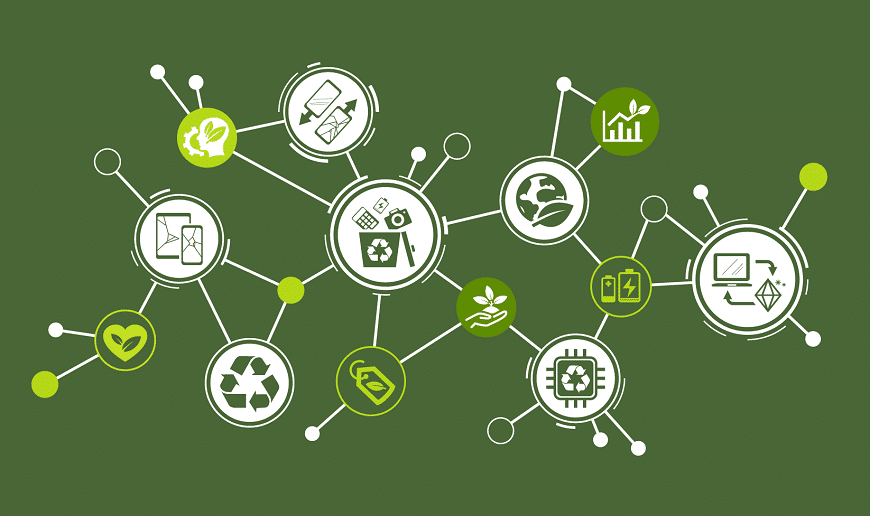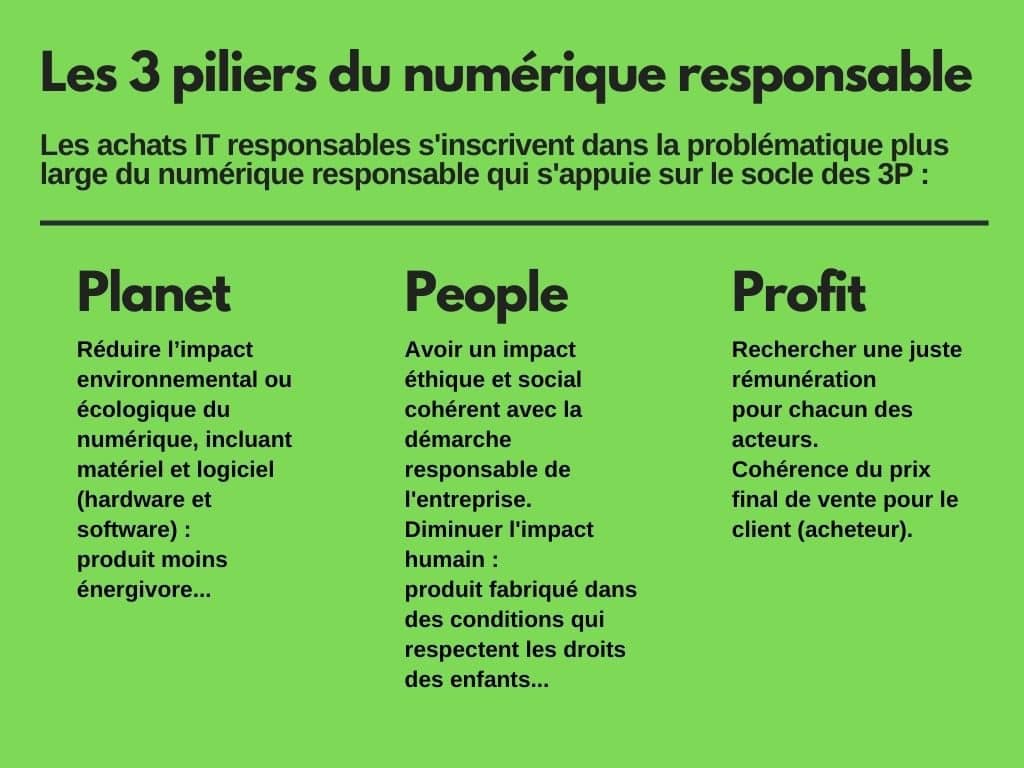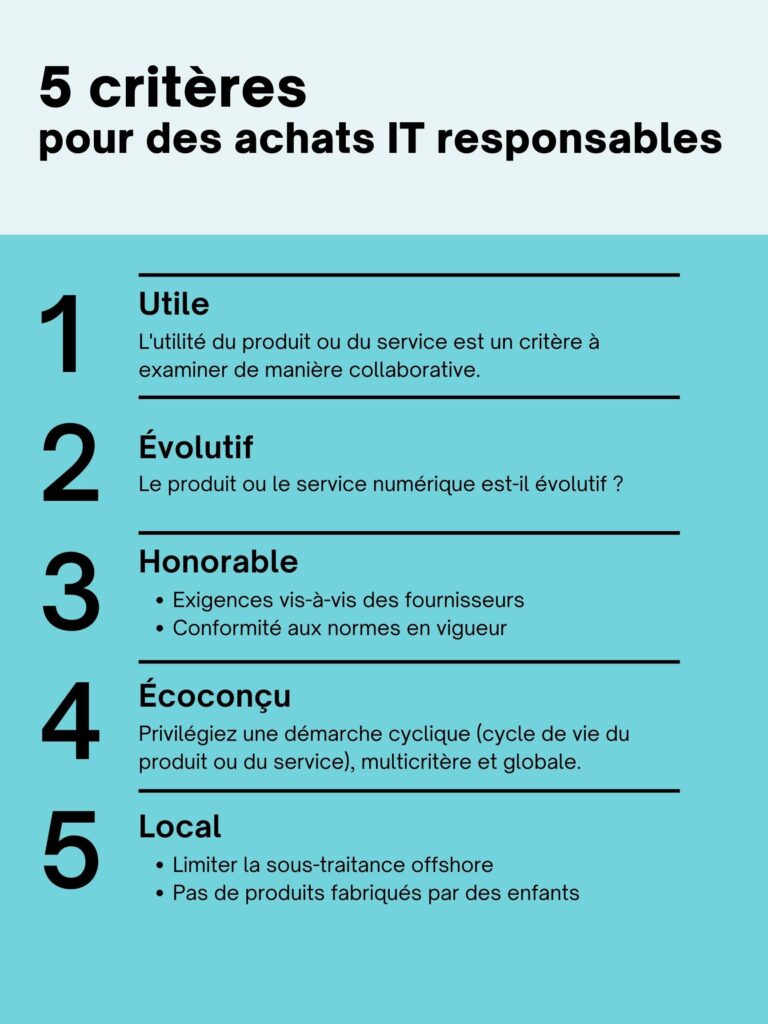Responsible IT procurement is set to become an increasingly important issue for businesses. Indeed, the law of 15 November 2021 aimed at reducing the environmental footprint of digital technology in France - known as the REEN law - is one of the markers of the growing drive for responsible digital technology. But how do you implement a responsible IT purchasing strategy? Jean-Anaël Gobbe, a digital services quality specialist specialising in green IT, takes a closer look.

Companies are increasingly concerned about the impact of their IT purchases. The idea is for them to be more consistent with their values and/or the expectations of their various stakeholders.
This is reflected, in particular, in IT purchases that they want to be increasingly responsible for both hardware and software.
And this in the three dimensions of responsible digital or 3P: Planet, People, Profit.

A responsible IT purchasing policy is at the heart of an effective a coherent and attractive CSR approach. On the one hand, it helps to retain the company's current employees and attract new talent. It also contributes to a positive image with partners, suppliers and customers. So there are many benefits for the company.
But where do you actually start?
5 essential criteria for responsible IT purchasing
To get off to a good start with its responsible IT purchasing policy, a company needs to start by defining what responsible purchasing means.
To do this, it can rely on 5 essential criteria: useful, progressive, honourable, eco-designed, local.

The way in which these criteria are taken into account is specific to each company. It may also vary depending on whether we are considering a service or a product. When considering usefulness, it is advisable to involve the people concerned in a collaborative way. For example: developing a framework via an online spreadsheet (Google Sheets). This is one of the aspects covered in the Responsible IT purchasing.
Ask yourself why you're making a purchase
Thinking about the usefulness of a digital product or service is tantamount to asking why you buy it. Does it contribute to the smooth running of the business and to the company's productivity? This is the starting point for the link between the information system (IS) and the regulation of a responsible IT purchasing policy.
Digital sobriety at the heart of a responsible IT purchasing strategy
Within the ideal framework of an optimised, fast and secure IS, digital sobriety is the major link between purchasing and the IS.
Savings at stake
Digital restraint must therefore be the guiding principle of IT purchasing strategy, as it seeks to save money from every point of view. Firstly, by avoiding unnecessary functions in a digital product or service. Secondly, because savings will also be made in terms of energy, functionality and finance.
More responsible use for employees
Digital sobriety also has to be considered from the user's point of view, in this case the company's employees, since the purchases are often intended for them. Raising awareness among employees and educating them about more responsible use, which helps to reduce needs, therefore seems preliminary to any other action.
"Doing more with less
Once up and running, this sobriety approach will enable us to do more with less, but above all to do more with better. Sobriety means quality. It therefore implies an immediate cost that is often more expensive... but it also entails a profitable bounce-back effect for the company with a significant economies of scale and replacement.
An environmental economy at the service of the company's image
According to theAdemeThe environmental savings would be around 169kg of CO2eq for a laptop, 189kg of CO2eq for a desktop and 236kg of CO2eq for a 21.5-inch screen.
Reconditioned, repairable, reusable: the key words in responsible IT purchasing
Favouring reconditioned and/or repairable equipment and re-use channels is at the heart of a responsible IT purchasing strategy.
Over the last ten years or so, networks have been set up to take back professional digital equipment for re-use. Contrary to popular belief, they are both safe and reliable. And many other initiatives are being set up every day. Here are just a few examples, Telecoopa cooperative telecoms operator, is offering 'sobriety' packages for professionals. For its part, Computer doctor provides troubleshooting and maintenance services for IT equipment for professionals who don't have an in-house IT department (particularly small businesses). And it does this locally, thanks to its network of branches across France.
A responsible IT purchasing policy enables a company to develop its leadership, adapt to changes in the market and establish a climate of trust with partners and customers. It's also a winning strategy in terms of image! To communicate its commitment, the company can sign the Responsible Digital Charter. In addition to the issue of responsible IT purchasing, it will be affirming its commitment to the optimisation of digital tools, ethical digital practices and the development of accessible services.


